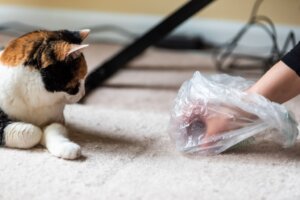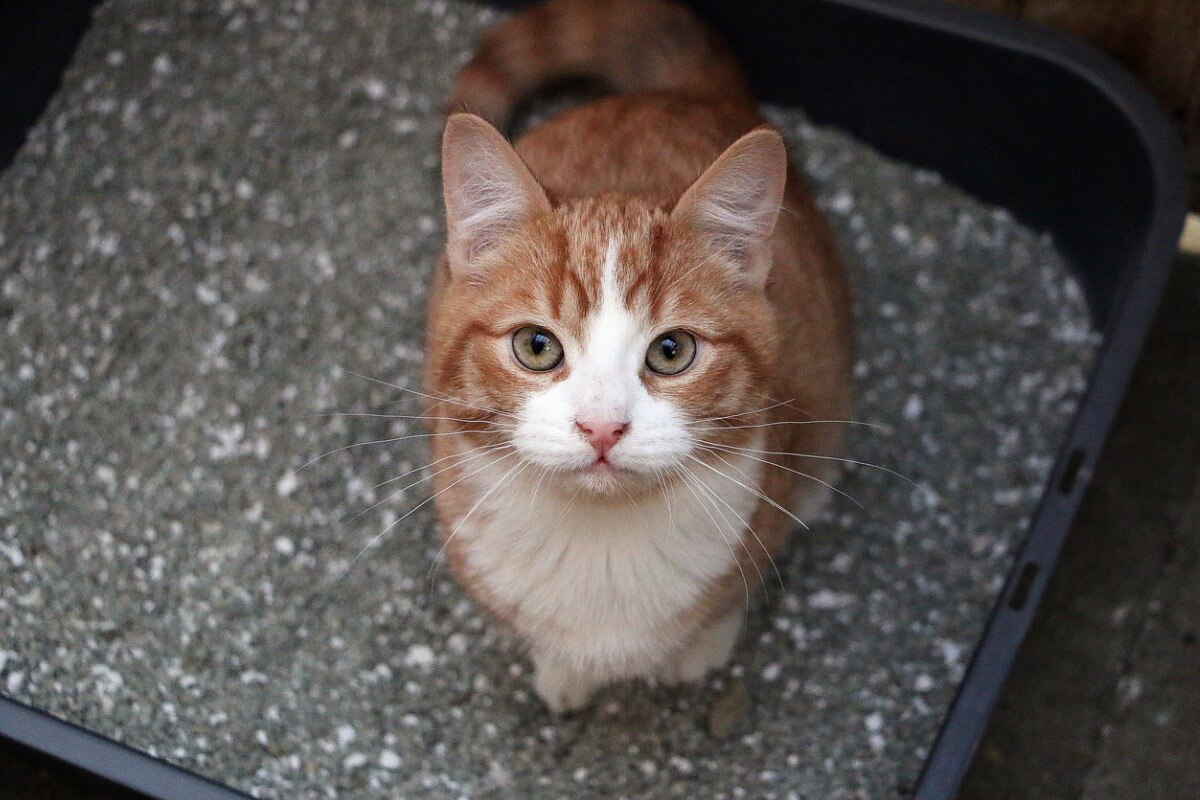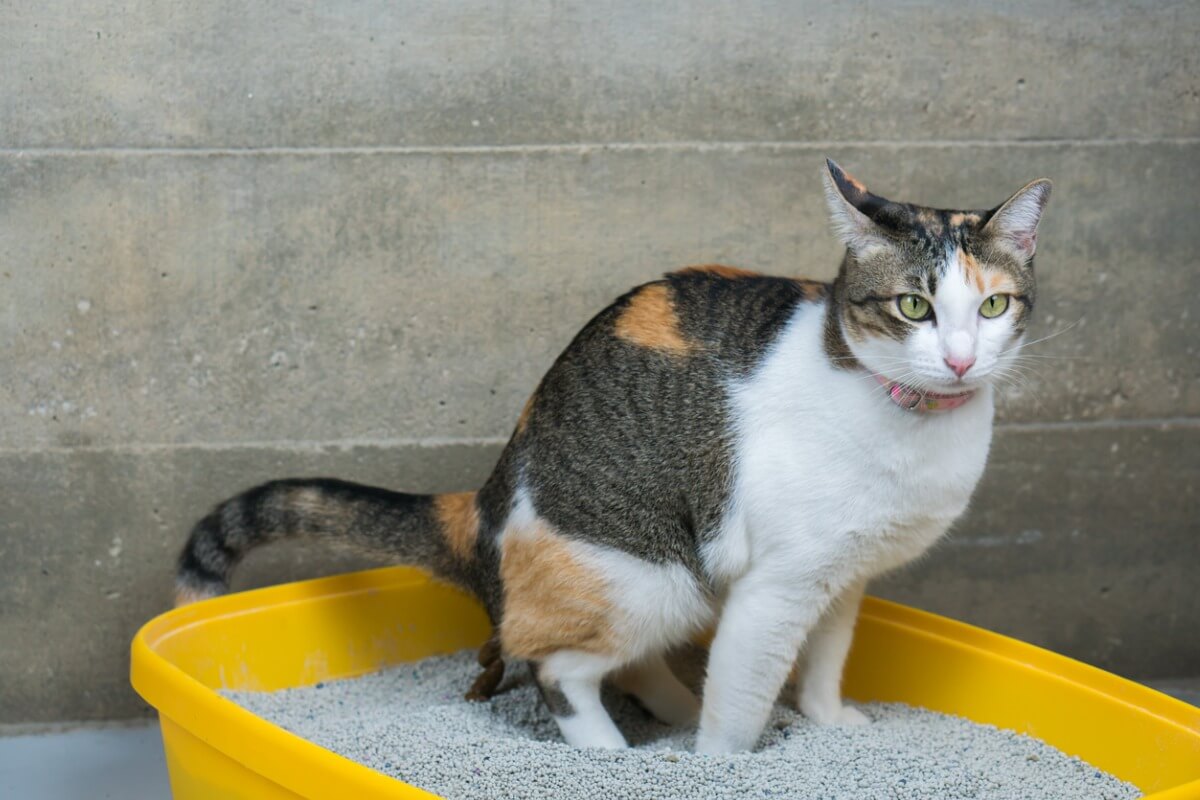What Do I Do if My Cat Stops Using the Litter Box?


Reviewed and approved by the biologist Samuel Sanchez
The reasons why a cat stops using the litter box are many and varied. This behavior can be caused by problems with the litter box, its location, changes in the environment, and various health conditions.
If your cat has stopped using its litter box and you want to know what to do, continue reading this article. It’s important to know all the possible reasons to find out what is causing this behavior (which is not normal in felines).
What to do if your cat stops using its litter box?
The first step in all situations is to take your pet to the vet to rule out any health problems. A physical examination is essential for any cat that stops using the litter box, as various physical pathologies can lead to this atypical behavior.
If your feline struggles to urinate, licks his genital area excessively, and has blood in its urine, it’s important that you also take it to the vet for these symptoms.
According to experts, most medical conditions that cause litter box failure are easily remedied. Here are some other things you can do if your kitty has stopped using its litter box.

Spay or neuter
Cats that haven’t been spayed or neutered are more likely to urinate outside their litter box. Felines with their sex organs intact adopt this behavior as a way of marking, which is associated with mating. However, this stops after spaying or neutering.
Get a different type of litter
Once you have ruled out possible medical conditions in your cat, it’s best to focus your attention on the litter box and the type of material the substrate is made of. These details are part of the other reasons why a cat stops using its litter box.
For example, this may be the problem if you have recently changed brands or types of litter. Many cats have specific preferences for the type of litter, as some cats don’t like chemical smells or perfumes because of their acute sense of smell.
If you need, or want, to change the litter your cat uses, do it gradually by adding a little more of the new product each time you clean the litter box until your cat gets used to it.
Have you ever had your cat onychectomized or had its nails clipped incorrectly?
Onychectomy is the surgical amputation of a cat’s claws, an extreme and unnecessary procedure for both felines and owners. However, if you chose this option with your pet (or perhaps if you didn’t know how to trim his nails and did it the wrong way), it’s likely that it can’t handle contact with sand.
It’s not unusual to see litter box and other behavioral problems in cats who have had their claws removed. These felines often develop an aversion to litter because their paws are very sensitive and sore from the surgery. As a result, they avoid getting into the litter box and relieve themselves outside of it.
To solve this behavior, look for other products that are friendlier to your feline’s paws. For example, poplar or pine wood shavings (used for guinea pigs or mice), soft paper litter, and shredded paper are useful.
Change their litter box or remove the covers
Many commercial litter boxes are too small for adult cats’ comfort, so try a larger box. A little more space could make all the difference.
Also, some felines (especially older or overweight cats) have difficulty getting into litter boxes with high walls. This is why it’s recommended to remove the covers, a tip that also applies to owners with highly stressed cats.
Place the litter box in a different place
Cats are creatures of habit, so don’t move the litter box drastically or do it overnight. If you must move the litter box, do it gradually. If possible, move it only a few inches a day, so your pet has plenty of time to adjust.
However, you can also show your feline the new location you’ve decided on for the litter box. Their instincts will allow them to remember this item as the place where they should now relieve themselves.
In addition, it’s important to place litter boxes in quiet places that offer a little privacy and are far away from your pet’s food and water stations. On the other hand, avoid high-traffic and noisy areas.
Clean the litter box consistently
Cats are very neat animals and any owner who lives with one will attest to that. Therefore, it’s very important to keep the litter boxes as clean as possible.
Some cats are so neat that they’ll only use the litter box once a day and will demand that it’s cleaned regularly, especially if there are several cats in your home. It’s also advisable to give the litter box a thorough cleaning and change the litter at least once a week, especially if it’s very busy.
To do this, scrub the litter box with a mild, low-scent soap or soak it in diluted vinegar water to remove odors. Don’t use bleach, chlorine, or ammonia-based products, as they’re very unpleasant to the feline’s sense of smell.
Add more than one litter box to your home
If your cat prefers to go to other areas of the house, you can install several litter boxes that are very attractive and easy to access. Place them in different locations, so your cat will use the box they prefer in the place they feel most secure.
Putting this advice into practice is also essential if you live with more than one cat, as there should be one litter box for each cat and one extra. In other words, if you have two cats, you should have three different litter boxes that are well distributed.
Intervene the affected area
Clean any area where your cat urinated or defecated to help eliminate the odor so your pet won’t be tempted to use the same spot again. Then block off the area. Generally, cats won’t relieve themselves where there’s food, so try placing a bowl containing some of their favorite treats on the carpet or floor.
You can also turn marked areas into very undesirable places. To do this, cover them generously with foil or plastic wrap. After several weeks, begin to remove the covering from the areas the cat is no longer interested in.
Use cat pheromones
Finally, in some cases, it’s worth talking to your veterinarian about the use of some behavior modifiers, such as pheromones. These products are useful tools to reduce your cat’s stress and help eliminate unwanted marking.
You can use pheromones right after cleaning all the areas where your feline has urinated (remember not to use bleach). Apply them to the affected area several times a day (instead of covering it with foil or plastic wrap) until the cat no longer marks the area.
Cat behavior is a pretty complex subject, so don’t get anxious if you find there’s too much to learn. Articles, books, veterinarians, and ethologists are there to help you.

The most important thing to understand is that by not using the litter box, your cat is communicating something and it’s essential to know what it is. Keep in mind that punishing your pet won’t correct the behavior at all, as this change in their habits is largely stress-related and punishment will increase this significantly.
All cited sources were thoroughly reviewed by our team to ensure their quality, reliability, currency, and validity. The bibliography of this article was considered reliable and of academic or scientific accuracy.
Best Friends Resource Center. (s. f.). Cat Not Using Litter Box: Causes and Solutions. Best Friends Animal Society. Recuperado 28 de septiembre de 2021, de https://resources.bestfriends.org/article/cat-not-using-litter-box-causes-and-solutions
This text is provided for informational purposes only and does not replace consultation with a professional. If in doubt, consult your specialist.